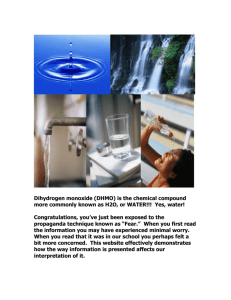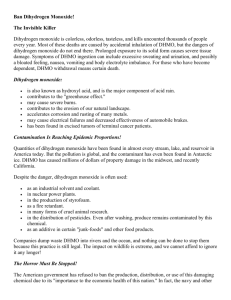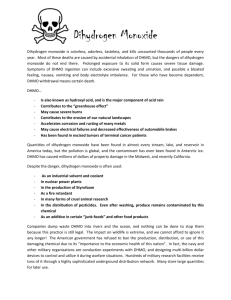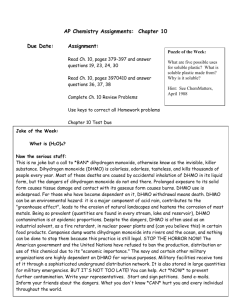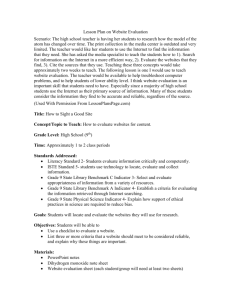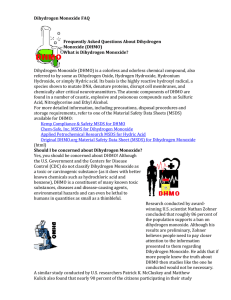Introduction to Science!!!!! - Mr. Ross's Science Class, Lakeview JH
advertisement
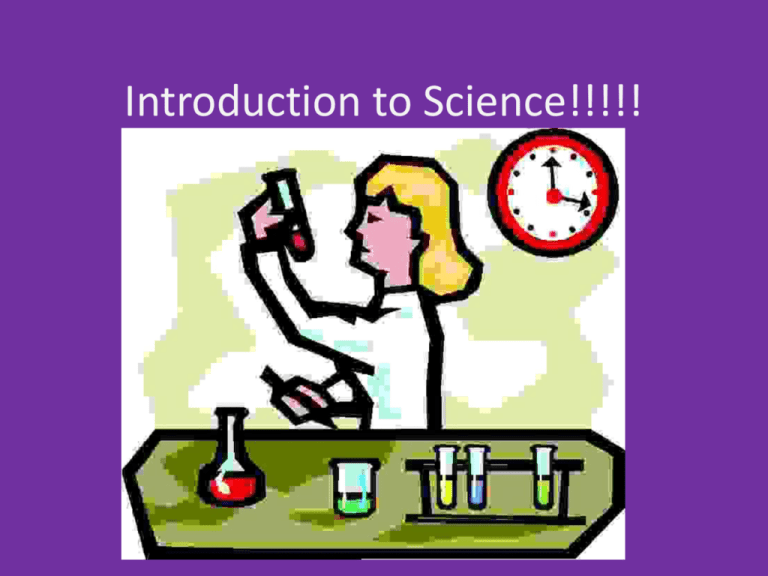
Introduction to Science!!!!! A. Human Qualities in Science 1. Reasoning- Observing what you see, hear, or touch, and saying why and how an event happens. 2. Creativity- thinking beyond what is available and trying/making something new. 3. Skepticism- not believing an explanation until a test supports the explanation. 4. Openness- willing to accept a new explanation; believing a theory is incorrect and must change. What is Science Like? • Consistent- The same event happens every time these • • • • • events occur… Observable- can we see the event happening Natural- is the event natural (not supernatural) Predictable- using past similar experiences, we can guess what might happen Testability- can we test the event in a controlled experiment Tentative – Means scientific theories will change and be revised. How do we “DO” science? • Science is based off of constant QUESTIONING D. Safety Rules 1. Read all LAB rules, and clean up! 2. Wear safety equipment like Goggles, lab aprons, and gloves; tie back long hair, and no loose Jewelry. 3. Inspect electrical equipment, keep away from Water 4. Point the mouth of containers Away from people. Never heat substances in Closed containers. 5. Never Smell, Taste, or Touch any unknown chemicals. Dispose of chemicals as Mr. Ross says. 6. Report all accidents IMMEDIATELY to Mr. Ross Which statement is scientific? Use CONPTT to tell which one is scientific 1. Walking under a ladder causes bad luck every time. OR Green plants will grow towards a light if its is placed near the plant.. 2. Green plants convert sunlight to energy OR The man pulled a rabbit from his hat using magic. 3. Some plants are carnivorous. Or Aliens have visited earth. 4. Traveling in the Bermuda Triangle will cause ships and planes to sink and disappear. OR Gum loses some of its mass when you chew it. 5. Without sunlight, green plants will die. OR Your horoscope says you will get a lot of money today! 6. The number of human chromosomes was once thought to be 48, but now it is 46. OR We know that the earth was formed around 6000 years ago. Scientific Method Question Observation Hypothesis- an educated guess Investigate Record data (pieces of information) Conclusion Queen Of Hearts In Reading Class Designing your experiment B. Parts of the investigation 1. Each investigation must be systematic 2. To find an answer to your question, you will test only one variable at a time. There are 3 types of variables. a) Independent Variable- the single thing you change b) Dependent Variable- the thing that may or may not be affected by the independent variable. c) Controlled Variables-factors that you try to keep the same. Also called constants. 3. Each study must include a Control group; a) compare results from the experiment to control group 4. You will change one independent variable and measure the dependent variable. 5. Compare your results to the control group, and make a Conclusion- what you decide the answer to your question is. 1. Make a quick summary of your scientist’s life. What were some of their great achievements? 2. Which quality (or qualities) did your scientist demonstrate most strongly? (Reasoning, openness, skepticism, creativity) 3. How were these qualities helpful to them? 4. Which of these qualities do YOU have? Give examples. Ban Dihydrogen Monoxide! -The Invisible Killer • Dihydrogen monoxide is colorless, odorless, tasteless, and kills uncounted thousands of people every year. Most of these deaths are caused by accidental inhalation of DHMO, but the dangers of dihydrogen monoxide do not end there. Prolonged exposure to its solid form causes severe tissue damage. Symptoms of DHMO ingestion can include excessive sweating and urination, and possibly a bloated feeling, nausea, vomiting and body electrolyte imbalance. For those who have become dependent, DHMO withdrawal means certain death. Dihydrogen monoxide: • is also known as hydroxyl acid, and is the major component of acid rain. • contributes to the "greenhouse effect." • may cause severe burns. • contributes to the erosion of our natural landscape. • accelerates corrosion and rusting of many metals. • may cause electrical failures and decreased effectiveness of automobile brakes. • has been found in excised tumors of terminal cancer patients. III. Bias in Science A. Bias 1. Science is the search for truth in nature 2. BIAS- favoring an explanation without REAL scientific support; distorting evidence so that results come out wrong a) You must remove any personal assumptions to make sure results are not influenced (so they are Pure TRUTH) b) Act like an alien. Pretend you know NOTHING Bias can happen in graphs, conclusions, testing, and in your observations. Testing Bias John challenges LeBron James to a jumping contest. John can jump 20 inches off the ground. LeBron takes his jump, but stumbles and only makes it 16 inches. John Concludes that he can jump higher than LeBron. What’s wrong with this? Observational Bias Jim has been looking for a special, maybe extinct woodpecker in the woods for 10 years now. One day, he hears a sound in the woods that he thinks may be the woodpecker he’s been looking for. He tells all his scientist friends that the woodpecker is alive! What’s wrong with this? Graph Bias Independent Variables (9/16)_ 1. Ask “What are the different test groups?” 2. Then ask “What’s the first difference between the test groups?” This is the IV Dependent Variable 1. Ask “What do we measure at the end or look for to make our conclusion?” This is the DV Controlled Variable 1. Ask “What stayed the same?” This is the CV Practice with Variables DeMontae wants to see which type of plastic bag is strongest. He takes 3 plastic bags from Kroger’s, 3 from Giant Eagle, and 3 from Walmart and fills them with weights until they break. DeMontae finds that the The Walmart bags can hold the most weight, averaging about 37 pounds. Practice with Variables Mariah likes Silly Bandz, but wants to know which brands break more easily. She takes 10 Crazy Bandz, 10 Silly Bandz, and 10 Zany Bandz and stretches them until they break. She measures how far each stretches before breaking. Mariah Sees that Crazy Bandz seem to stretch the farthest before breaking. Practice with Variables Smokey the Bear wonders what his friends the deer like to eat more, corn or soy beans. He takes two bowls and fills them up with equal amounts of corn in one and beans in the other. Every day, Smokey weighs the bowls to see which one has had more eaten out of it. After 7 days, Smokey sees that the corn bowl is always the lightest. Practice with Variables Mr. Ross wants to see who can jump highest, so he has 2 students challenge him. Student A jumps 3 times, and jumps 45 centimeters high at his best Student B jumps 3 times, and jumps 52 centimeters high at her best Mr. Ross jumps 1 time and jumps an amazing 64 centimeters! E. Displaying Data 1. Line Graphs 2. Bar Graphs 3. Pie Charts/ Circle Graphs 4. Data Tables
